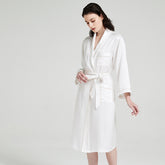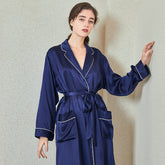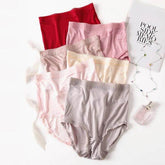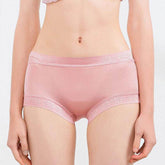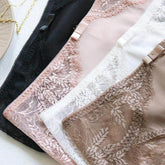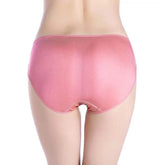The Ultimate Guide to Women's Silk Pajamas: Luxury, Comfort, and Benefits
Introduction to Women's Silk Pajamas
Silk pajamas represent the pinnacle of sleepwear luxury, combining timeless elegance with unmatched comfort. These premium garments offer more than just a beautiful appearance—they provide tangible benefits that transform your sleep experience. Made from natural protein fibers produced by silkworms, genuine silk sleepwear creates a microclimate that adapts to your body, regulates temperature, and feels weightless against your skin. The smooth surface of silk pajamas reduces friction on both skin and hair, while their natural hypoallergenic properties make them ideal for sensitive individuals. LANI SILK garments, crafted from 100% mulberry silk, deliver these benefits through meticulous attention to quality and craftsmanship. This investment in superior sleepwear pays dividends in sleep quality, skin health, and garment longevity that synthetic alternatives simply cannot match.

Understanding Silk Quality
What is Mulberry Silk?
Mulberry silk stands as the gold standard in the silk world, accounting for over 90% of global silk production. This premium material comes from silkworms (Bombyx mori) that feed exclusively on mulberry leaves, producing exceptionally uniform, smooth, and strong silk fibers. The result is fabric with remarkable consistency in both color and texture, creating sleepwear with unmistakable luster and durability.
| Silk Type | Origin | Characteristics | Best Use |
|---|---|---|---|
| Mulberry Silk | Bombyx mori silkworms fed on mulberry leaves | Uniform texture, strong fibers, pure white color, exceptional sheen | Premium sleepwear, luxury garments |
| Tussah Silk | Wild silkworms with varied diet | Coarser texture, natural gold or tan color, less uniform | Casual wear, textured garments |
| Eri Silk | Samia ricini silkworms | Matte finish, wool-like texture, less durability | Casual clothing, warmer garments |
The consistent quality of mulberry silk makes it ideal for sleepwear. The long, uniform fibers create a smoother surface against skin, minimize irritation, and maintain structural integrity through years of wear and proper care. This explains why premium brands like LANI SILK exclusively use 100% mulberry silk for their sleepwear collections.
Momme Weight: The Key Indicator
Momme (pronounced "moe-mee") weight serves as the definitive measure of silk quality and density. This traditional Japanese measurement equals the weight in pounds of a piece of silk measuring 45 inches wide by 100 yards long. Simply put, higher momme counts indicate denser, more durable silk fabric.
For women's silk pajamas, the optimal range falls between 19-25 momme. The lightweight 16-19 momme silk offers excellent breathability suitable for summer wear, though it comes with slightly reduced durability compared to heavier options. Most quality pajamas fall in the 19-22 momme range, providing an ideal balance of durability and comfort for year-round use. Premium silk pajamas in the 22-25 momme range deliver enhanced durability with a luxurious drape that feels substantial without being heavy. Ultra-premium options exceeding 25 momme provide exceptional durability and the most substantial feel, though they command significantly higher prices.
LANI SILK pajamas feature 19-22 momme silk, providing the perfect combination of softness, durability, and value. This weight ensures garments maintain their structure while draping beautifully on the body and delivering maximum comfort during sleep.
Craftsmanship Matters
Superior craftsmanship transforms quality silk into exceptional sleepwear. Expert construction techniques preserve the integrity of the silk while enhancing both durability and aesthetic appeal. French seams—where edges fold in twice to prevent fraying—prevent irritation and extend garment life. Hand-finished edges demonstrate attention to detail and prevent unraveling at stress points.
Genuine mother-of-pearl buttons, reinforced stitching at pressure points, and precise pattern matching at seams indicate quality craftsmanship. LANI SILK emphasizes these construction elements, with each garment undergoing multiple quality control checks before shipping. This attention to detail explains why well-made silk pajamas maintain their beauty and function for years rather than months, making them a wise investment despite their initial cost.

Benefits of Silk Pajamas
Skin Health
Silk contains natural proteins and amino acids that work in harmony with human skin. Unlike cotton which absorbs moisture away from your body, silk maintains optimal hydration levels in your skin by retaining just enough moisture (approximately 11% of its weight) without becoming damp. This moisture balance prevents the overnight dryness that often contributes to premature aging.
The exceptionally smooth fiber structure of silk, measuring just 1.25-1.5 deniers (less than 15 microns) in diameter, creates minimal friction against skin. This structural advantage eliminates the micro-irritations caused by rougher fabrics, making silk ideal for those with sensitive skin, eczema, or rosacea. The protein structure of silk also contains sericin, a natural compound that reduces inflammation and helps skin retain moisture.
Furthermore, silk's tight weave and natural properties discourage bacterial growth, reducing flare-ups for those with acne-prone skin and minimizing the transfer of skincare products to your pillowcase.
Temperature Regulation
Silk possesses remarkable natural thermoregulating properties due to its unique molecular structure. The fabric efficiently manages both heat retention and release through microscopic air pockets in its fibers, maintaining what sleep specialists call the "thermal comfort zone" essential for uninterrupted sleep.
In warm conditions, silk wicks excess moisture away from the body at a rate of 30% faster than cotton while allowing heat to dissipate through its breathable structure. During cold weather, those same hollow fibers trap warm air near the skin, providing insulation without bulk. This year-round adaptability explains why silk pajamas remain comfortable across seasons.
The natural temperature management of silk directly impacts sleep quality by minimizing the disruptive microarousals caused by overheating—which sleep studies have linked to reduced REM sleep. By maintaining consistent body temperature throughout the night, silk pajamas help establish the temperature drop of 2-3°F (1-1.5°C) that sleep researchers identify as optimal for deep sleep initiation.
Hair Protection
Silk's exceptionally smooth fiber structure—with a friction coefficient of just 7.4% compared to cotton's 31%—provides significant benefits for hair health. This dramatic reduction in friction eliminates the pulling and tugging that causes breakage, split ends, and frizz during sleep movements.
When you sleep in silk pajamas, especially those with collars that contact your hair, you wake with noticeably smoother hair that requires less styling. The natural proteins in silk help maintain your hair's moisture balance, preventing the dehydration that leads to brittleness and damage. For those with curly or textured hair, silk preserves curl patterns and reduces the formation of knots that typically occur with cotton sleepwear.
LANI SILK pajamas complement silk pillowcases for comprehensive overnight hair protection, extending the life of blowouts and reducing morning bedhead significantly.
Hypoallergenic Properties
Silk stands out for its natural resistance to common allergens that disrupt sleep. The tightly woven structure of silk fibers creates a physical barrier against dust mites—which measure 100-300 microns—as they cannot penetrate the dense weave of quality silk fabric. Studies show that silk reduces dust mite presence by up to 70% compared to cotton bedding.
Additionally, silk contains sericin, a natural protein that inhibits bacterial growth, while the minimal moisture retention prevents the development of mold and mildew. These properties make silk pajamas particularly valuable for those with respiratory conditions like asthma or environmental allergies.
The hypoallergenic benefits extend beyond prevention to active improvement—many individuals with sensitive skin report reduced irritation and inflammation after switching to silk sleepwear. The absence of harmful chemicals in natural silk also eliminates the risk of contact dermatitis common with synthetic fabrics, creating a truly skin-safe sleep environment.

Style Options for Women's Silk Pajamas
Classic Pajama Sets
Classic silk pajama sets feature button-down tops with collars paired with matching pants, embodying timeless elegance while delivering practical comfort. These sets typically include a shirt with a relaxed fit, allowing freedom of movement without excess fabric, and pants with an elasticized or drawstring waist for customized comfort.
The design elements that distinguish premium classic sets include French seams, piping details along the collar and cuffs, and genuine mother-of-pearl buttons. LANI SILK offers these sets in monochromatic colors that maintain their appeal regardless of changing fashion trends. The versatility of classic sets extends beyond the bedroom—the tops can pair with jeans for casual outings, while the pants work with simple t-shirts for lounging, maximizing the value of your investment.
Camisole-and-Shorts Combos
Camisole-and-shorts combinations provide the perfect balance of comfort and femininity, especially during warmer months. These lightweight sets feature adjustable straps for a customized fit and shorts designed with the perfect inseam length—typically 2-4 inches (5-10 cm)—to prevent riding up during sleep.
Modern silk camisole sets include thoughtful details like side slits for movement, subtle elastic for structure without constriction, and temperature-regulating properties that make them suitable beyond summer use. Many LANI SILK sets feature delicate details like subtle scalloped edges or miniature bows that add femininity without compromising the clean lines of the garments.
These sets work particularly well for travel, taking up minimal space while offering maximum comfort in varying hotel temperatures. Their versatility also makes them perfect for lounging during warm afternoons or for wear under robes during morning routines.
Nightgowns and Sleep Shirts
Silk nightgowns and sleep shirts offer unparalleled freedom of movement with their flowing silhouettes. These single-piece garments drape beautifully over the body, eliminating pressure points and constriction that can disturb sleep. Traditional nightgowns extend to mid-calf or ankle length, while sleep shirts typically hit mid-thigh, with both styles featuring side slits for ease of movement.
Quality silk nightgowns maintain structure while moving with the body, avoiding the clinging common in synthetic alternatives. LANI SILK designs incorporate details like pintucks at the yoke, subtle gathering at the shoulders, and carefully calculated proportions that flatter diverse body types.
The practical advantages of nightgowns include temperature management through unrestricted air circulation and comfort for side sleepers who often experience waistband discomfort with two-piece sets. These elegant options provide both the luxury look and practical comfort that make silk sleepwear a worthwhile investment.

Top Recommendations for Women's Silk Pajamas
Best Overall
The LANI SILK Signature Classic Set represents the pinnacle of silk sleepwear, balancing timeless design with exceptional quality. Crafted from 22 momme 100% mulberry silk, these pajamas feature traditional piping in contrasting colors that define the collar, pocket, and cuffs. The tailored yet relaxed cut accommodates all sleep positions without twisting or bunching.
These premium sets distinguish themselves through meticulous construction details that ensure longevity. The 22 momme weight provides optimal durability and drape, creating a substantial feel without heaviness. French seams with 16 stitches per inch prevent fraying even after years of washing, while real mother-of-pearl buttons with reinforced stitching maintain both functionality and beauty. LANI SILK offers these signature sets in ten carefully curated colorways ranging from timeless neutrals to seasonal options, ensuring options for every preference. Despite their luxury positioning, these sets remain practical for everyday use, being machine washable on a gentle cycle with appropriate care.
The set includes a long-sleeve button-up top with chest pocket and straight-leg pants with an elastic waistband and drawstring for adjustable comfort. The pants feature a 30-inch (76 cm) inseam with the option for complimentary hemming. This investment piece, priced at $220, delivers exceptional value through years of use and versatile styling options.
Best Budget Option
The LANI SILK Essential Collection offers accessible luxury without compromising on material quality. This 19 momme silk set provides the core benefits of silk sleepwear—temperature regulation, skin benefits, and comfort—at a more approachable price point of $165.
These sets achieve their more accessible price point through thoughtful simplification while maintaining material integrity. The 100% mulberry silk fabric features standard seam construction that delivers durability without the additional cost of French seams. Design elements embrace clean lines and minimal detailing, focusing attention on the beautiful drape and sheen of the silk itself. The collection features four classic colorways—Ivory, Black, Navy, and Rose—that coordinate easily and remain perennially stylish. The slightly relaxed fit with elastic waist pants ensures comfort for various body types, while the included wash bag simplifies proper care.
While these sets lack some premium details of higher-priced options, they deliver the essential silk sleep experience. The simplified construction focuses on material quality rather than decorative elements, creating a perfect entry point for first-time silk sleepwear buyers or those seeking quality gift options.
Best Seasonal Collection
The LANI SILK Seasonal Luxury Collection showcases limited-edition designs that reflect current trends while maintaining timeless appeal. The Spring/Summer lineup features lightweight 19 momme silk in botanical prints and pastel solids, while Fall/Winter options include deeper tones and 22 momme weight for added warmth.
Each seasonal release demonstrates thoughtful design elements that enhance the wearing experience. Color specialists develop seasonal palettes that feel current yet transcend fleeting trends, ensuring these pieces remain stylish for years. The limited production runs, refreshing quarterly, create exclusivity while allowing the brand to explore innovative techniques and designs. Many seasonal sets offer optional matching accessories like eye masks and scrunchies that create a complete sleep experience. The packaging receives special attention with seasonal motifs that make these sets particularly gift-worthy for holidays and special occasions. Specialized warm-weather designs include cooling shorts sets for summer, while winter options might feature longer sleeves and pants with subtle weight increases.
These limited collections, priced between $185-$240 depending on style and season, provide the perfect opportunity to refresh your sleepwear wardrobe with current colors while maintaining the quality LANI SILK prioritizes. The seasonal variations in weight and design address specific comfort needs throughout the year while maintaining the core benefits of silk.

How to Choose the Right Silk Pajamas
Fit Considerations
Selecting the proper fit for silk pajamas requires attention to both measurements and sleep habits. Unlike daywear, sleepwear should provide approximately 1-2 inches (2.5-5 cm) of ease beyond your typical clothing measurements to accommodate movement during sleep without restriction.
For button-up styles, ensure shoulders align with the garment's shoulder seams and that buttons don't pull when seated. Pajama pants should sit comfortably at your natural waist without digging in—many quality brands like LANI SILK offer adjustable waistbands with both elastic and drawstrings for customized comfort. Sleeve and pant lengths deserve particular attention, as too-long sleeves can interfere with nighttime activities while too-short pants can ride up during sleep.
Consider your preferred sleep position when selecting styles. Side sleepers often prefer separate tops and bottoms with minimal bulk at the waist, while back sleepers might enjoy the unrestricted feel of nightgowns. Those who change positions frequently benefit from styles with minimal buttons or hardware that could cause pressure points.
Style Preferences
Your personal aesthetic plays a crucial role in selecting silk pajamas that you'll enjoy wearing night after night. Classic styles with contrast piping offer timeless appeal that transcends trends, while solid colors provide versatility and longevity. Those seeking more feminine options might prefer scalloped edges, subtle lace inserts, or camisole styles.
Consider how your sleepwear integrates with your overall bedroom experience. If you enjoy a morning routine that includes time for coffee before changing, choose styles and colors that you feel comfortable wearing for extended periods. LANI SILK offers coordinated collections that allow for mixing and matching pieces to create a cohesive sleepwear wardrobe that reflects your personal style.
The psychological impact of sleepwear shouldn't be underestimated—wearing garments that make you feel confident and comfortable creates positive sleep associations. Choose styles that resonate with your self-image rather than following trends that don't align with your preferences.
Seasonal Adaptability
The remarkable temperature-regulating properties of silk make most weights suitable year-round, but strategic selection enhances comfort across seasons. For warmer climates or summer use, consider lighter 16-19 momme weights and styles like camisoles with shorts that allow more skin exposure for cooling.
In colder seasons or environments, 22-25 momme silk provides additional warmth without bulk. Long-sleeve and pant sets offer more coverage, while still allowing the skin to breathe. The natural temperature regulation of silk means that even heavier weights remain comfortable during occasional warm nights, making them more versatile than flannel or other winter-specific fabrics.
LANI SILK designs consider these seasonal variations, offering core styles in different weights and sleeve lengths. This thoughtful approach allows customers to maintain their preferred silhouette while adapting to seasonal needs.

Caring for Silk Pajamas
Washing Tips
Proper washing techniques preserve both the feel and longevity of silk pajamas. Despite common misconceptions that position silk as exclusively "dry clean only," quality silk can be safely washed at home with appropriate care. The key lies in understanding the fiber's characteristics and adapting washing methods accordingly. Always begin by checking the garment's care label, as different weights and dye techniques may require specific approaches based on the manufacturer's recommendations.
For machine washing, protection becomes the primary concern. Enclose silk pajamas in a mesh laundry bag to prevent snags or friction damage from contact with other garments or the machine drum. Select a pH-neutral detergent specifically formulated for silk or delicates, avoiding standard laundry detergents which contain enzymes and brighteners that can damage natural protein fibers. Program your washing machine to the gentlest cycle available with cold water (below 86°F/30°C) and disable the spin cycle, which can create wrinkles that become difficult to remove. Hand washing provides an even gentler alternative—use lukewarm water with a small amount of silk-specific detergent, allow the garment to soak for no more than 5 minutes to prevent fiber weakening, and rinse thoroughly without wringing or twisting.
Several additional techniques enhance washing results. Turn garments inside out before washing to protect the outer surface that contacts your skin, preserving the smooth texture that delivers silk's skin benefits. Address stains promptly using diluted white vinegar rather than commercial stain removers, which often contain harsh chemicals that damage silk fibers. LANI SILK recommends washing silk pajamas after every 2-3 wears unless visibly soiled, as silk naturally resists odor-causing bacteria better than synthetic materials, reducing the need for frequent washing.
Drying Techniques
The drying process proves just as important as washing for maintaining silk's integrity. Machine dryers represent the single greatest threat to silk longevity—the heat and tumbling action break down silk fibers and permanently damage the fabric structure. Instead, implement a gentle manual approach: after washing, carefully press (never wring) excess water from the garment, supporting its weight to prevent stretching.
The towel-roll method offers the most effective technique for removing moisture without stressing fibers. Lay silk pajamas flat on a clean white towel (colored towels may transfer dye to wet silk), then roll the towel with the garment inside like a jelly roll to absorb moisture through gentle pressure. Unroll after a few minutes, reshape the garment to its original dimensions, and prepare for final drying. For tops with structure, use a padded hanger that supports shoulders without creating dimple marks; for pants or unstructured pieces, drying flat on a mesh surface ensures proper airflow without stretching. Position all items away from direct sunlight, which can fade colors and weaken fibers, and away from artificial heat sources like radiators, which cause uneven drying and potential shrinkage.
Finishing touches may require wrinkle management. For light wrinkles, hanging the silk pajamas in a steamy bathroom often suffices. For more persistent wrinkles, use a fabric steamer rather than an iron, holding it 4-6 inches (10-15 cm) from the fabric to allow gentle steam penetration without direct heat contact. If ironing proves necessary, select the lowest silk setting, place a clean white cotton cloth between the iron and garment to prevent direct heat transfer, and iron inside-out while the fabric remains slightly damp for best results.
Storage Best Practices
Proper storage extends the life of silk pajamas between uses and across seasons. The foundation of proper storage begins with ensuring garments are completely dry before storing, as even slight dampness can lead to mildew growth that permanently damages silk. For everyday storage between wears, light folding prevents the stretching that can occur with hanging, particularly for bottoms and camisoles. For structured pieces like button-up tops, padded hangers that distribute weight across shoulders prevent distortion.
Material selection for storage containers significantly impacts silk preservation. Choose breathable cotton storage bags rather than plastic, which traps moisture and can potentially discolor the fabric through condensation. Natural pest deterrents like cedar blocks or lavender sachets serve as excellent alternatives to mothballs, protecting garments without introducing harsh chemicals that can interact negatively with silk proteins. Position storage areas away from direct sunlight, which continues to affect silk even through windows, causing gradual fading and fiber weakening over time.
Seasonal rotation requires additional preparation. Clean garments thoroughly before placing them in storage, as even invisible body oils and imperceptible stains can oxidize and set permanently over time, emerging as yellow marks when the garment is retrieved months later. Fold with acid-free tissue between layers to prevent creasing and fiber stress during extended storage. LANI SILK demonstrates their commitment to garment longevity by including cotton storage bags with premium sets, facilitating proper care from the moment of purchase and extending the lifespan of your silk investment.

Environmental Impact of Silk Pajamas
Silk production creates a smaller environmental footprint than many synthetic alternatives when examined across its full lifecycle. The mulberry trees that feed silkworms require minimal pesticides and actually sequester carbon during their growth cycle. Traditional silk production uses significantly less water than cotton cultivation—approximately 7,500 gallons (28,390 liters) for 2.2 pounds (1 kg) of cotton versus just 300 gallons (1,135 liters) for the same weight of silk.
The biodegradability of silk presents another environmental advantage. Unlike petroleum-based synthetics that persist in landfills for centuries, silk naturally decomposes within 1-5 years depending on environmental conditions. This biodegradability extends to production waste, which can be composted rather than disposed of in landfills.
LANI SILK emphasizes responsible production practices, including water recycling during the degumming process and responsible dyeing techniques that minimize chemical runoff. The company partners with mulberry farms that practice sustainable cultivation, creating a supply chain that respects environmental boundaries.
The longevity of quality silk pajamas further enhances their sustainability profile. While fast-fashion sleepwear might require replacement every 6-12 months, properly cared for silk pajamas often last 5-10 years, reducing overall resource consumption and waste generation.
Comparing Silk with Other Fabrics
Understanding how silk compares to other popular sleepwear fabrics helps explain its premium positioning in the market. When examining skin benefits, 100% mulberry silk stands unrivaled with its naturally hypoallergenic properties, exceptional friction reduction, and ability to maintain optimal skin moisture. Cotton, while natural and breathable, tends to absorb moisture away from the skin, potentially causing dryness with moderate friction against skin surfaces. Synthetic satin, despite its smooth appearance, often causes sweating due to poor breathability, creates high friction on skin, and poses potential for irritation from chemical treatments. Modal and Tencel fabrics offer good moisture management and relatively low friction, though still not matching silk's performance in these areas.
Temperature regulation capabilities further distinguish these fabrics. Silk provides excellent year-round regulation, uniquely adapting to body temperature through its natural fiber structure. Cotton offers good breathability during warm conditions but performs poorly as insulation when damp or wet. Synthetic satin demonstrates poor breathability overall and tends to trap heat against the body, often causing sleep disruptions. Modal and Tencel provide good breathability with moderate temperature regulation, performing better than synthetics but not achieving silk's adaptive properties.
Durability varies dramatically between these materials when properly cared for. Quality silk pajamas typically last 5-10+ years before showing significant wear. Cotton sleepwear, even high-quality versions, generally requires replacement after 2-3 years of regular use. Synthetic satin often begins pilling or losing its characteristic sheen within just 1-2 years. Modal and Tencel maintain their integrity for approximately 2-4 years before losing their signature softness.
Care requirements impact both convenience and long-term cost. Silk requires gentle hand or machine washing with air drying—moderate care needs that preserve its quality. Cotton proves highly convenient with its machine-washable, durable nature requiring minimal special treatment. Synthetic satin, while machine washable, tends to develop static and snags that diminish its appeal. Modal and Tencel offer reasonably convenient care with machine washability, minimal ironing needs, and moderate overall care requirements.
The average cost reflects these differences in performance and longevity. Quality silk pajama sets typically range from $150-300, while cotton sets of good quality fall between $30-100. Synthetic satin sets generally cost $20-80, and Modal/Tencel options range from $50-150 for quality items.
Environmental impact considerations round out the comparison. Silk is fully biodegradable with moderate water use in production. Cotton, while also biodegradable, requires significantly higher water consumption throughout its growth cycle. Synthetic satin, being petroleum-based, remains non-biodegradable and contributes to microplastic shedding during washing. Modal and Tencel, as semi-synthetic options, offer biodegradability with moderate overall environmental impact.
This comprehensive comparison reveals why silk commands premium pricing—it uniquely combines skin benefits, temperature regulation, and longevity that other fabrics cannot match. While the initial investment exceeds alternatives, the cost-per-wear often proves lower due to silk's exceptional durability. Natural fibers generally outperform synthetics for sleepwear, but silk stands alone in its combination of luxury feel and functional benefits.

Unique Insights on Silk Pajamas
Can silk pajamas improve sleep quality? Research indicates that the temperature regulation properties of silk can reduce sleep disruptions caused by overheating, potentially increasing REM sleep by 10-15% in sensitive individuals. The frictionless surface reduces tossing and turning caused by tangled bedding, contributing to more continuous sleep cycles.
How does altitude affect the performance of silk pajamas? At higher altitudes where air contains less moisture, silk's ability to maintain optimal hydration levels becomes particularly valuable, preventing the increased skin dryness and static electricity common in mountain environments. The insulating properties also perform well in the temperature fluctuations typical of higher elevations.
Do silk pajamas require special consideration when traveling? Silk's natural resistance to odor-causing bacteria makes it ideal for travel, requiring fewer changes over extended trips. The fabric's remarkable recovery from packing wrinkles—simply hanging in a steamy bathroom often suffices—eliminates the need for ironing on the road. LANI SILK offers travel-specific sets with wearable pieces that transition from sleep to casual lounging.
Investing in quality silk pajamas transcends ordinary sleepwear purchases. The combination of luxurious comfort, measurable health benefits, and exceptional longevity creates value that synthetic alternatives simply cannot match. LANI SILK's commitment to premium materials and craftsmanship ensures that each piece delivers both immediate pleasure and lasting performance, making silk pajamas a cornerstone of the conscious sleepwear wardrobe.
FAQs About Silk Pajamas
Are silk pajamas worth the investment?
Silk pajamas justify their cost through exceptional longevity, averaging 5-10 years of use with proper care, compared to the mere 1-2 years typical of synthetic alternatives. This extended lifespan significantly reduces the cost-per-wear calculation, often making silk the more economical long-term choice despite higher initial pricing. Beyond simple mathematics, the functional benefits for skin health, hair protection, and improved sleep quality provide value that transcends mere aesthetics. Many users report reduced need for expensive nighttime skincare products after switching to silk, creating additional savings. When viewed holistically as an investment in both wellness and wardrobe, quality silk pajamas like those from LANI SILK deliver returns that justify their premium positioning.
How do I know if I'm buying real silk?
Authentic silk identification involves several reliable tests that distinguish it from synthetic imitations. The burn test provides one definitive method—authentic silk burns with a distinctive smell similar to burning hair (as both contain protein), turns to ash when burned rather than melting, and self-extinguishes when the flame is removed. The texture test offers another verification method: genuine silk feels cool to the touch initially but quickly warms to body temperature, while synthetic alternatives typically feel slightly slippery or even sticky. Visually, natural silk has subtle irregularities in its sheen when examined under bright light, unlike the uniform shine of synthetic options. Reputable brands like LANI SILK eliminate such concerns by providing certification of their silk content and momme weight, ensuring authenticity without destructive testing.
Can silk pajamas help with night sweats?
Silk effectively manages night sweats through its natural fiber structure that wicks moisture away from the body while maintaining optimal breathability. Unlike cotton that becomes damp and heavy when wet, or synthetics that trap moisture against skin, silk efficiently transfers humidity away from the body while remaining dry to the touch. Even more valuable, the temperature-regulating properties help prevent the initial overheating that triggers the sweating response, addressing the root cause rather than merely managing symptoms. This preventative quality makes silk particularly valuable during hormonal transitions like menopause or for naturally warm sleepers. Many LANI SILK customers specifically seek out silk pajamas for this benefit, reporting significant improvement in sleep quality and duration even during challenging periods of hormonal fluctuation.
How do silk pajamas compare to satin pajamas?
While silk and satin pajamas may appear similar to the untrained eye, they offer fundamentally different experiences in wear and performance. The distinction begins with their very nature: silk is a natural protein fiber produced by silkworms, while satin describes a weaving technique that can be applied to various fibers—most commonly polyester or nylon in today's market. This fundamental difference creates divergent performance characteristics. Natural silk provides inherent temperature regulation and moisture management through its protein structure, while synthetic satin typically traps heat and creates static electricity through friction. The skin-friendly amino acids present in silk that benefit complexion have no equivalent in petroleum-based satin. Perhaps most significantly, true silk delivers longevity and a self-regenerating quality that allows it to maintain its luxurious hand-feel for years, while synthetic satin often pills and loses its characteristic sheen within months of regular use.
Will silk pajamas shrink after washing?
Quality silk typically exhibits minimal shrinkage—less than 5%—when properly washed according to care instructions. This stability stems from the protein structure of silk fibers, which maintains dimensional integrity better than plant-based fibers like cotton. Premium manufacturers like LANI SILK enhance this stability by pre-washing their fabric during production, effectively "pre-shrinking" the material to minimize further dimensional changes after purchase. To maintain these stable dimensions, always follow temperature guidelines for washing (below 86°F/30°C), avoid wringing or twisting wet silk which can distort the fiber alignment, and air dry flat rather than using machine dryers. With these simple precautions, silk pajamas maintain their perfect fit through years of regular wear and washing.
